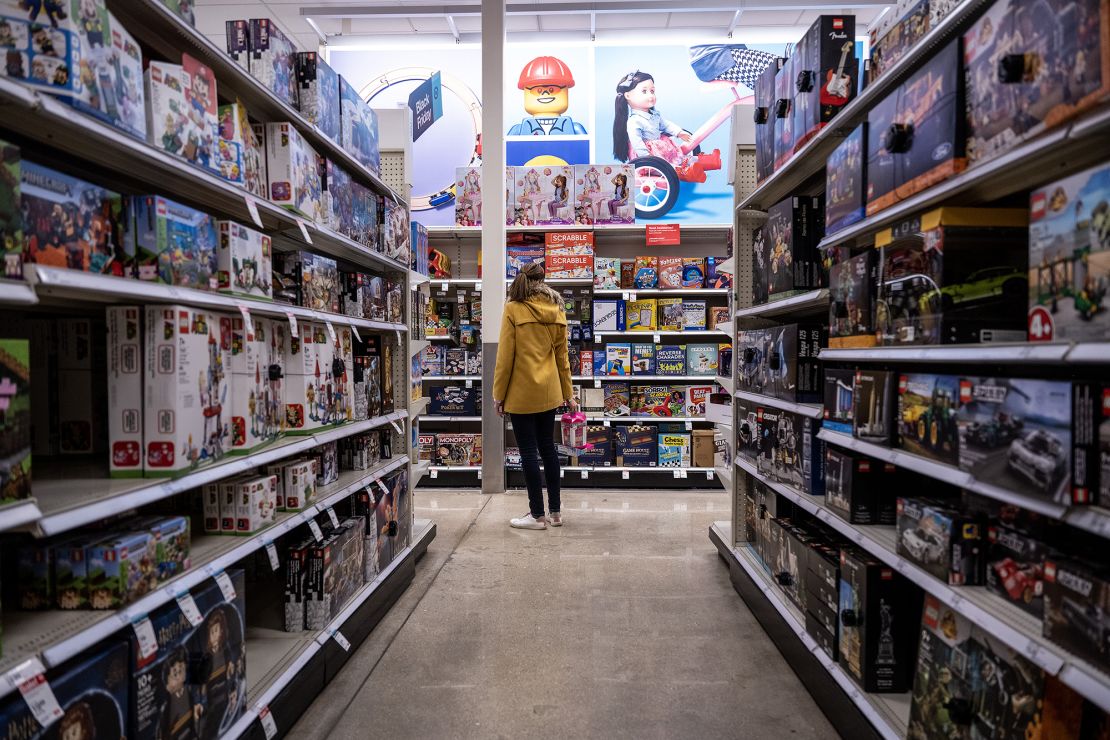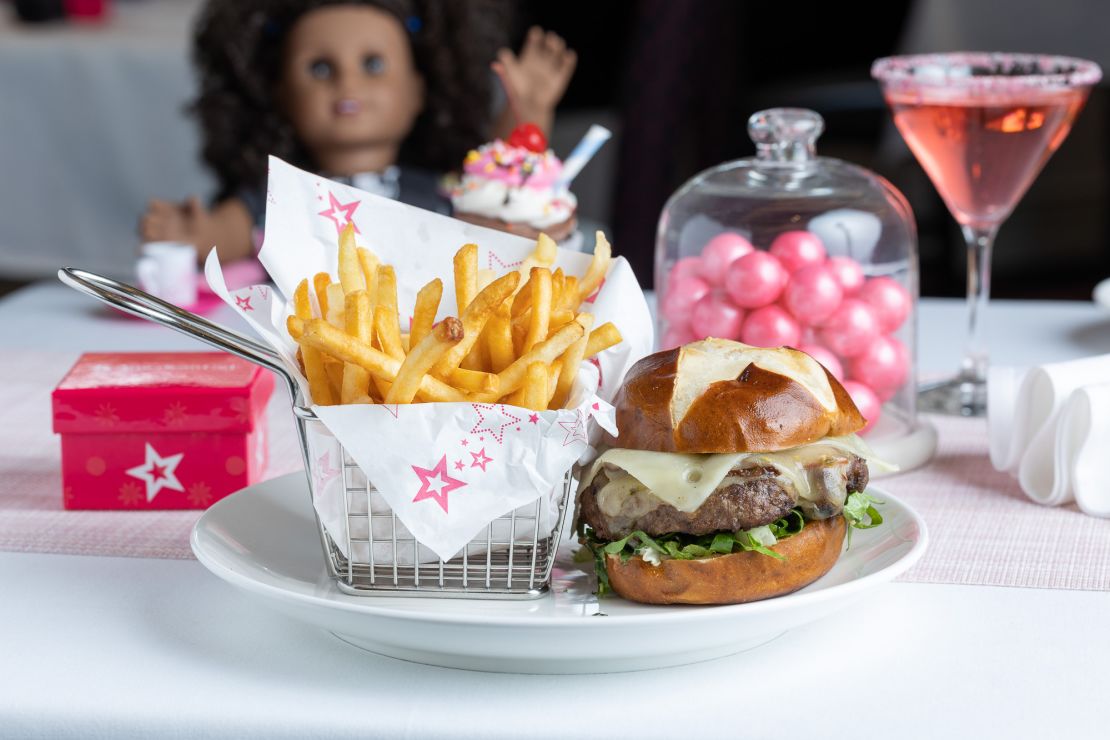New York
CNN
—
I was on vacation and hanging out quietly in the hotel room with my friend when, out of nowhere, she screamed “Zoo Pals are back!”
We immediately tried to buy some. But to our misfortune, they were sold out. For days we refreshed the page to see if they were back in stock. Sure enough, I got my Zoo Pals a few weeks later.
I’m almost embarrassed to share that Zoo Pals are paper plates that feature the bright, adorable faces of animals like pigs, turtles, ducks and whales. Each plate has one main section and two subsections for the animal’s ears or feet. In 2014, Hefty, the maker of Zoo Pals, discontinued them.
As a child, Zoo Pals were a game-changer. That meant broccoli didn’t have to, God forbid, touch my chicken nuggets, and they also provided a special area for dipping the nuggets in ketchup. And I had an incentive to finish my plate so I could see my Zoo Pal’s face again.
As an adult, I no longer have such needs. But $6.99 was a small price to pay for a walk down memory lane.
Adults are increasingly shelling out for relics of their youth and for items, ranging from flip phones to film cameras to Tamagotchis, that evoke a late 20th-century or turn-of-the century nostalgia. That demand has created a treasure-trove of sales in particular for toys and products, like my Zoo Pals, originally geared to children.
Toy recipients ages 18 and up — also known as “kidults” — represented about 17% of total toy sales in the United States for the 12 months ending in June 2023, according to data consumer research group Circana shared with CNN. That’s up four percentage points from 2021 and up a whopping eight percentage points from 2019.
In total, toy sales for adults increased by $1.7 billion to $6.4 billion from June 2021 to June 2023, according to Circana data.
The trend of adults buying toys for themselves is relatively new, but longing for the glory days of childhood is not. So how come adults lately have been willing to spend so much money on toys to relive the past?
The pandemic drove more people to revisit their youth
Adults started purchasing more toys for themselves after the pandemic began. Covid ushered in heightened levels of anxiety and it caused people to think about dying more, explains Krystine Batcho, a licensed psychologist who teaches at Le Moyne College in Syracuse, New York.
Both factors are associated with “greater nostalgia,” said Batcho, whose research focuses on the psychology of nostalgia. Batcho created the Nostalgia Inventory, a survey that’s been widely used to assess what makes someone more inclined to feel nostalgic.
For instance, her research and other research she’s studied point to millenials and members of Gen Z being in life stages that are prime for feeling nostalgic. “The transition away from childhood and adolescence to adulthood entails a bittersweet conflict between the desire to grow into independence and the desire for the carefree innocence and security of childhood,” she said.
And, in general, people become more nostalgic during difficult times and in threatening circumstances, Batcho added.
During the pandemic, as people were looking for ways to entertain themselves at home or in small groups they turned to social media for ideas, Juli Lennett, Circana’s toy industry advisor, told CNN. That helped fuel an increase in purchases for games, puzzles, collectibles, trading cards, building sets and more, she said.
“Consumers found like-minded toy consumers and tribes formed around certain toy categories and brands. It continues to this day,” Lennett said.
In 2021, Lego launched an entire product line designed for adults that can be found under the “Adults Welcome” section of its site. “In a world of distractions, LEGO Sets for Adults offer a focused, hands-on, mindful activity. A creative recharge. A zone of zen. A place to find your flow,” a post on Lego’s site states.

Mattel Inc.’s American Girl doll line has also seen an influx of purchases made by kidults over the past few years, “and it continues to grow in popularity,” Jamie Cygielman, the president of American Girl, told CNN.
That started to take off in 2021 when American Girl re-released six of the original dolls the company had produced to celebrate its 35th anniversary. The dolls, priced at $150, began to sell out the first day they were listed online, said Cygielman. More than half of those purchases “were women purchasing for themselves, not for a child,” she said based on a subsequent survey American Girl conducted.

“So we started really leaning into it a bit more,” she said. That meant re-releasing more dolls and doll outfits adults grew up with as well as adding more alcoholic beverages and food items that appeal to adults to its in-store café menus.
“Any given day as you walk into our café, you’ll see tables of young adults with not a child in sight,” said Cygielman. Many of them come there to celebrate birthdays and bachelorette parties, often with their dolls sitting in clip-on chairs beside them.
Most recently, American Girl re-released two doll outfits that were originally sold in 1999.
TikTokers and Instagramers had a field day seeing those and rushed to post about it.
Since American Girl creates individual stories featuring historical eras like the Colonial period or World War II to complement the dolls they sell, users on social media started posting things like, “We need an American Girl doll who went to college in 2016.”
The TikTok account that posted that request, @inbloombyemily, received nearly 200,000 likes on her video where she described the doll’s story and curated outfits and accessories which included a Svedka bottle of strawberry lemonade vodka.

American Girl hasn’t seized the opportunity to actually make most of the dolls the memes capture, said Cygielman.
“It’s a sincere form of flattery, but we don’t necessarily want to author it ourselves,” she said. “We’re still laser-focused on our core customer, which is that young girl and her caregiver gift giver.”
As for the kidult trend, there are some signs that it could slow, Lennett said.
“As consumers have less money in their wallets due to macroeconomic conditions, they are spending less on discretionary categories like toys,” she said. “If the conditions continue, we can expect a pullback in toy spending for adults.”
But Batcho, the psychologist, notes that nostalgia can be healthy in hard times.
“Nostalgic memories remind people of better times and can encourage them to seek solutions and move toward a more optimistic future,” she said. “Nostalgia has also been found to increase a sense of meaning and purpose in life. By strengthening social connectedness and feelings of belonging, nostalgia counteracts loneliness.”
Even though the darkest days of the pandemic are, for the most part, in the rearview mirror there’s still “a nostalgic longing for the security and stability of pre-pandemic life,” Batcho said.